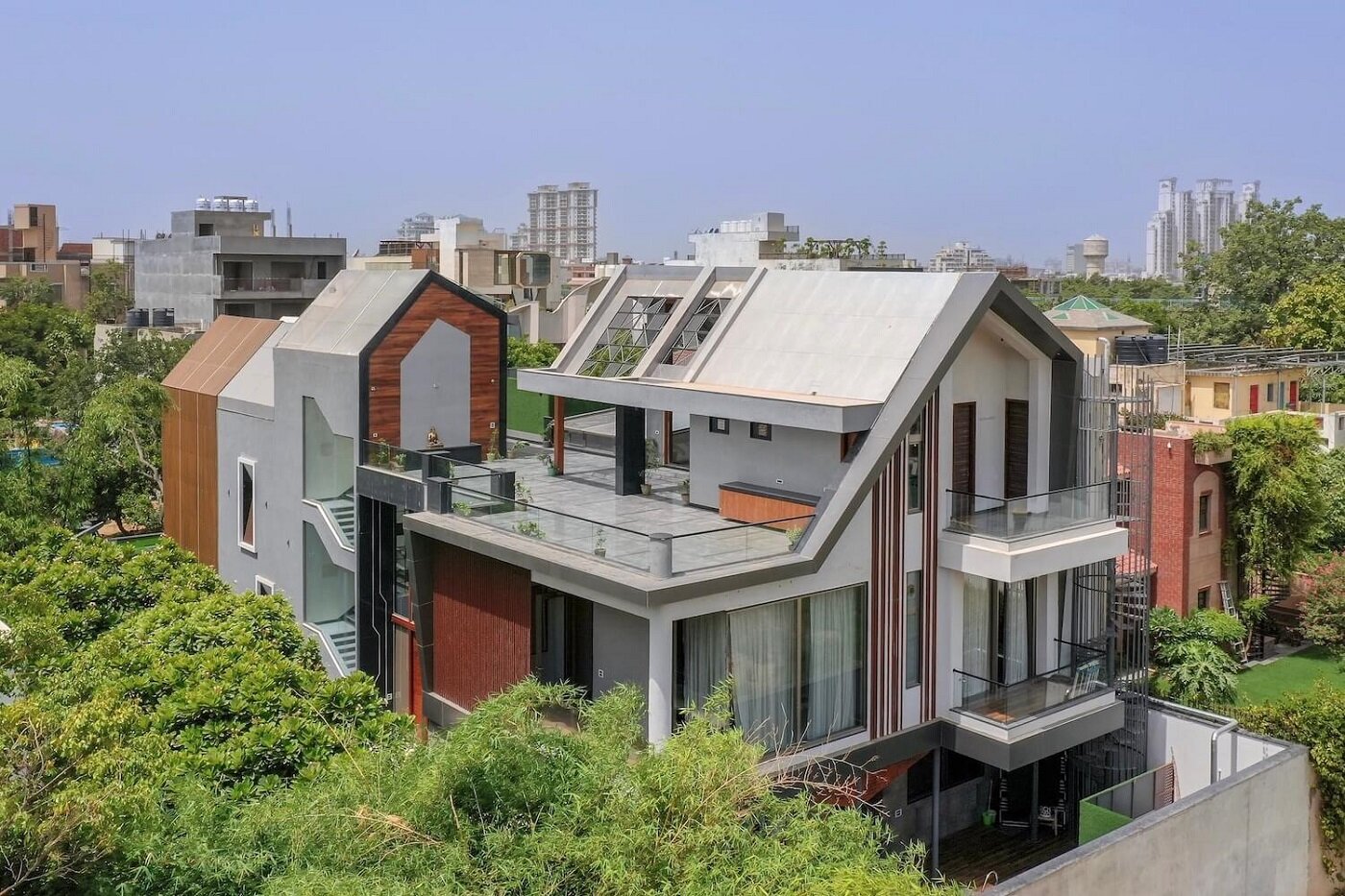#17194. Modern residential house with multi-level facade and contrasting materials

This is an impressive example of modern residential architecture that masterfully combines various materials and geometric forms. The building's facade presents a remarkable composition of angular volumes, creating a dynamic and expressive silhouette. Particularly striking is the use of contrasting materials: gray concrete, warm wood, and large glass surfaces.
The diversity of textures on the facade creates an interesting play of light and shadow. Wooden panels integrated into certain sections of the facade add warmth and organic quality to the strict geometric composition. The sloped roofs reference traditional architectural forms but are executed in a contemporary interpretation, giving the building its unique character.
The architect skillfully employed the principle of multi-layering in the facade design, creating volumes of different heights and depths. Terraces and balconies are seamlessly incorporated into the overall composition, extending the living space and providing connection with the surrounding greenery. Large panoramic windows ensure abundant natural lighting and visually connect the interior with the exterior.
In your own home, a similar approach to facade design can be adapted by using contrasting materials to highlight individual elements, playing with roof geometry, and creating multi-level terraces. It's important to remember that the key to successful design is the balance between diversity of elements and overall harmony of the composition.